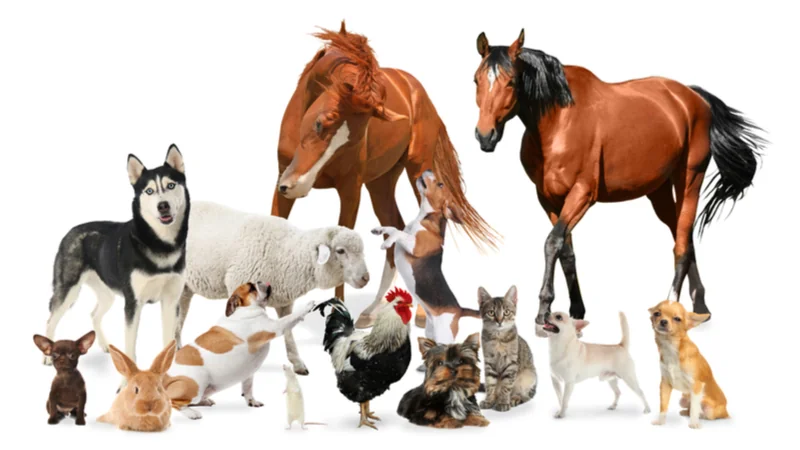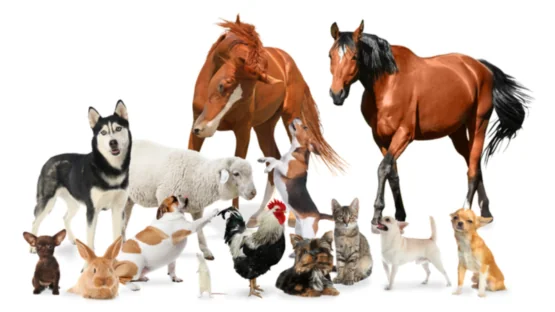In a study published in Nature, scientists have found an extremely strong correlation between somatic mutation rate and lifespan across several species, highlighting the importance of mutation burden for aging [1].
The question of why lifespan varies so vastly among species, including closely related ones, has always fascinated geroscientists. Studying exceptionally long-lived species might reveal the secrets of their longevity and answer questions about the evolutionary roots of aging (read our recent interview with Dr. Steven Austad, the author of the upcoming book Methuselah’s Zoo).
Several explanations for variability in lifespan have been proposed. For instance, one popular theory links lifespan to body size. Larger species generally do live longer, but the correlation is far from perfect, and there are many outliers, such as the naked mole rat, which has a 30-year lifespan that many large animals can only dream of.
Another theory of aging postulates that variability in lifespan is mostly caused by different rates of somatic mutations among species, that is, mutations in the cells that are not germ cells [2]. Such mutations are not passed to the descendants of the animal (excluding animals that reproduce asexually, such as the hydra), but they are passed to the descendants of the mutated cell. Somatic mutations accumulate with age and cause multiple problems, including cancer and other age-related diseases [3]. According to the somatic mutation theory of aging, species with a slower rate of mutation should live longer, and this new study is the first one to put this assumption to a serious test.
Mutate more, age faster
The researchers collected 206 samples of intestinal crypts from 56 individuals belonging to several species with widely different lifespans and body sizes. Crypts are tiny structures covering the walls of the colon, and they consist of epithelial cells that have a high replication rate. It was important to collect samples from the same tissue in all the species, since mutation rates differ across tissues. In addition to well-studied species such as the mouse, rat, and human, the list included the colobus monkey, cat, cow, dog, ferret, giraffe, harbor porpoise, horse, lion, naked mole rat, rabbit, ring-tailed lemur, and tiger.
The main takeaway from the study was the exceptionally strong correlation between the species’ lifespan and its average rate of mutation. According to the researchers, no other factor, including body weight, could even come close. It’s that simple: the slower the rate of somatic mutations, the longer the lifespan. However, when added to the model, body weight, basic metabolic rate, and litter size did improve it slightly.

Source: Nature
Direct comparisons between species were revealing as well. The giraffe and naked mole rat have a 23,000-fold difference in body weight but a very similar somatic mutation rate and similar lifespans. Cows and horses weigh much more than a human, but their somatic mutation rates are several times higher, while their maximum lifespan is several times lower, and so on.
Contribution to aging
The authors note that while somatic mutations cannot be the sole cause of aging, they probably contribute to aging in multiple ways. The most obvious one is carcinogenic mutations: the higher the mutation rate, the higher the probability that a cell will acquire enough mutations to become cancerous.
However, a cell does not have to become cancerous to cause serious trouble, it just has to acquire mutations that both alter its function and improve its ability to replicate, leading to fast proliferation (so-called clonal expansion, which is also a hallmark of cancer). Widespread clonal expansions have been discovered in various aging human tissues [4]. One study links hematopoietic clonal expansion to inflammation and cardiovascular disease [5]. Another one shows that higher burdens of somatic mutations and clonal expansions contribute to chronic liver disease and insulin resistance [6].
Somatic mutations are not entirely chaotic. Their patterns are called mutational signatures, and those signatures have been linked to different stressors and malfunctions in different DNA repair mechanisms. The researchers have determined that humans mostly share their three main mutational signatures with other species, with some variations. This means that those signatures and their underlying processes are evolutionarily conserved, which invites further investigation. What is more important, though, is that all three mutational signatures are strongly correlated with lifespan, showing that the overall mutation burden, rather than any specific type of mutation, is what contributes to aging.
Conclusion
This important study gives a boost to the somatic mutation theory of aging and provides an explanation for the variability in lifespan across the animal kingdom. While it has been long known that mutation burden is a cause of aging, its contribution might be much more substantial than previously thought. This demands additional research in humans and points at a possible avenue for developing anti-aging interventions.
Literature
[1] Cagan, A., Baez-Ortega, A., Brzozowska, N. et al. Somatic mutation rates scale with lifespan across mammals. Nature (2022)
[2] Morley, A. A. (1995). The somatic mutation theory of ageing. Mutation Research/DNAging, 338(1-6), 19-23.
[3] Greenman, C., Stephens, P., Smith, R., Dalgliesh, G. L., Hunter, C., Bignell, G., … & Stratton, M. R. (2007). Patterns of somatic mutation in human cancer genomes. Nature, 446(7132), 153-158.
[4] Martincorena, I., Roshan, A., Gerstung, M., Ellis, P., Van Loo, P., McLaren, S., … & Campbell, P. J. (2015). High burden and pervasive positive selection of somatic mutations in normal human skin. Science, 348(6237), 880-886.
[5] Jaiswal, S., & Libby, P. (2020). Clonal haematopoiesis: connecting ageing and inflammation in cardiovascular disease. Nature Reviews Cardiology, 17(3), 137-144.
[6] Ng, S. W., Rouhani, F. J., Brunner, S. F., Brzozowska, N., Aitken, S. J., Yang, M., … & Campbell, P. J. (2021). Convergent somatic mutations in metabolism genes in chronic liver disease. Nature, 598(7881), 473-478.





